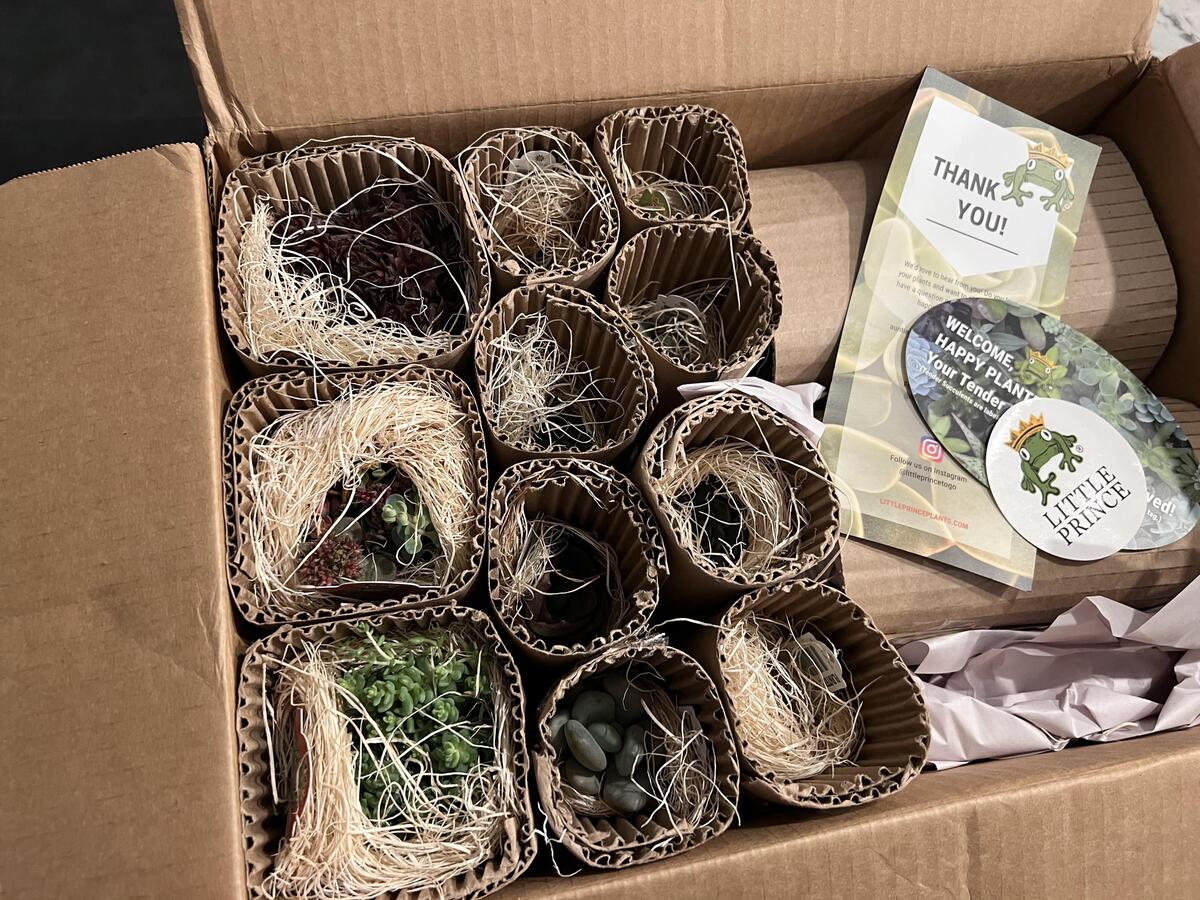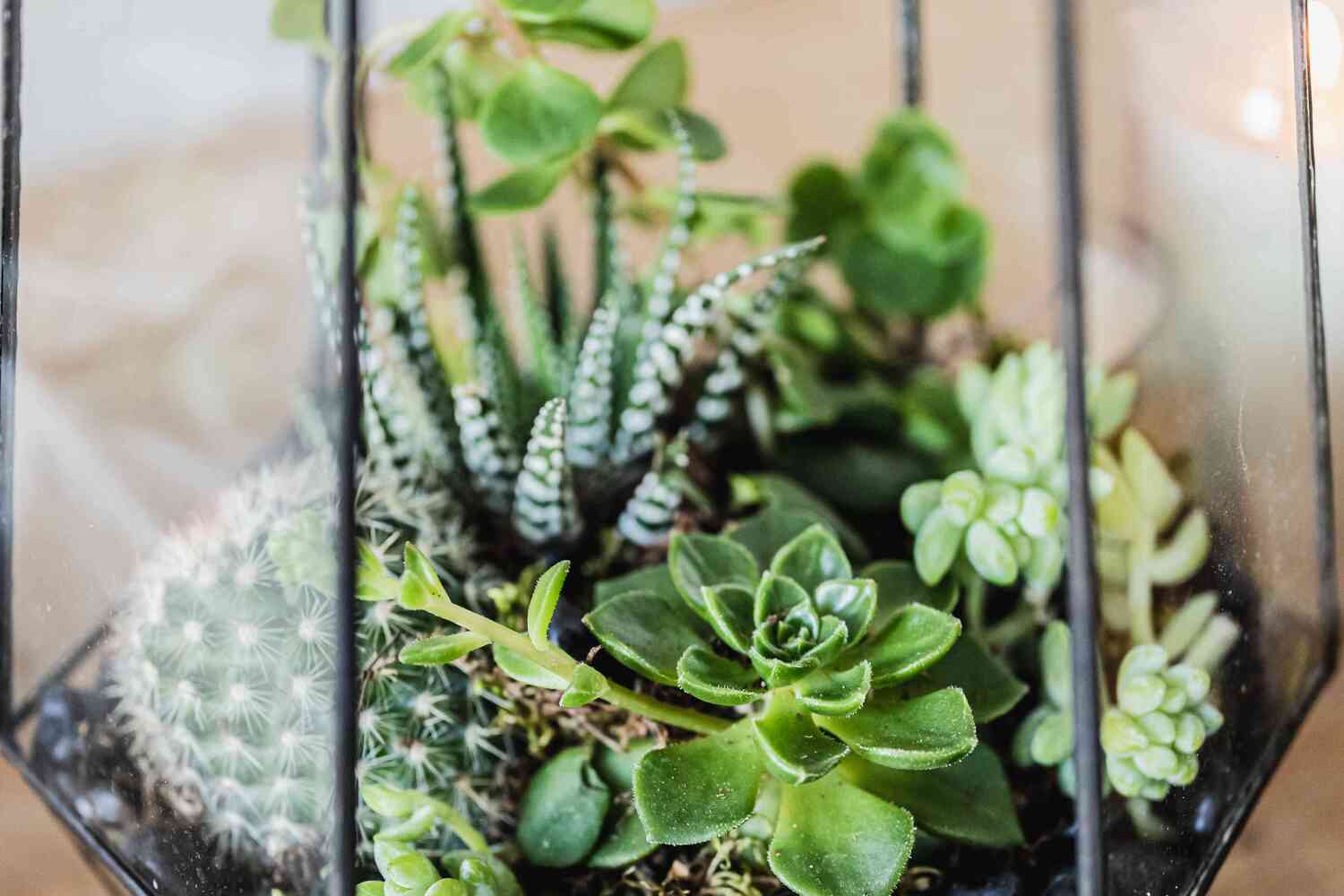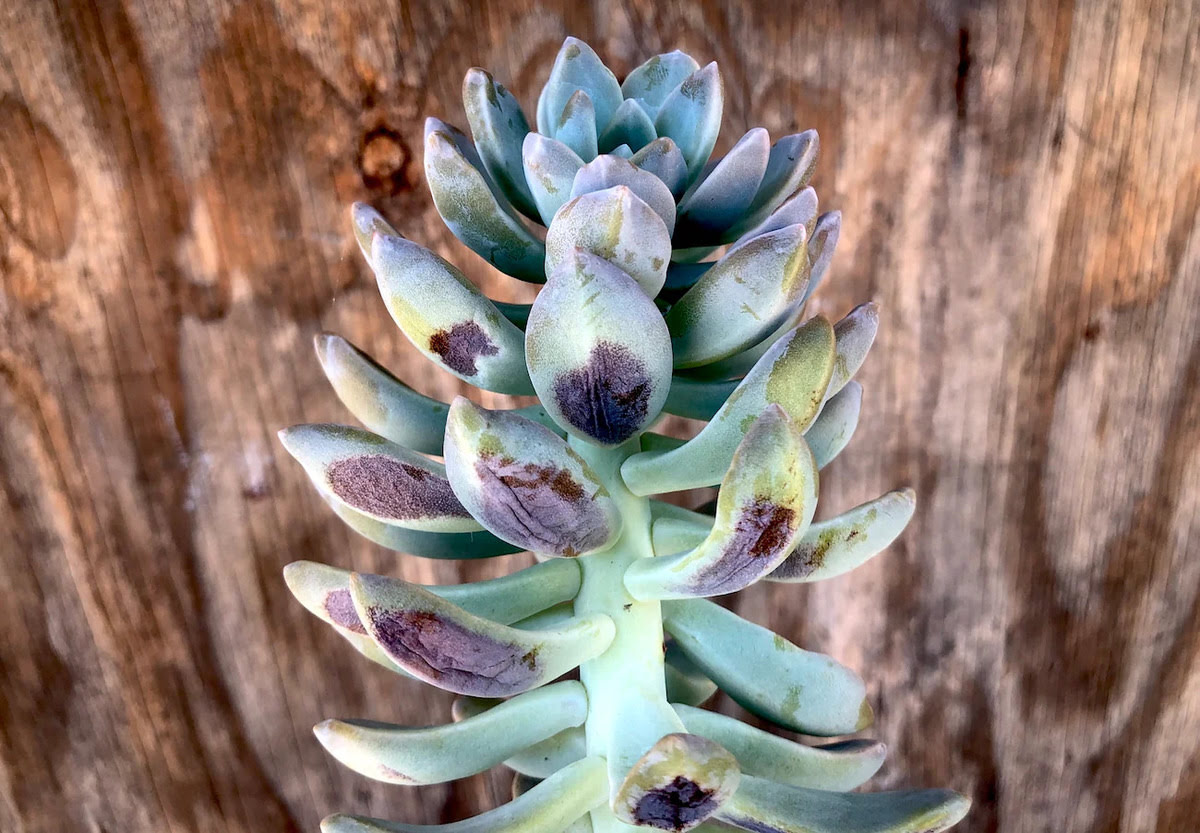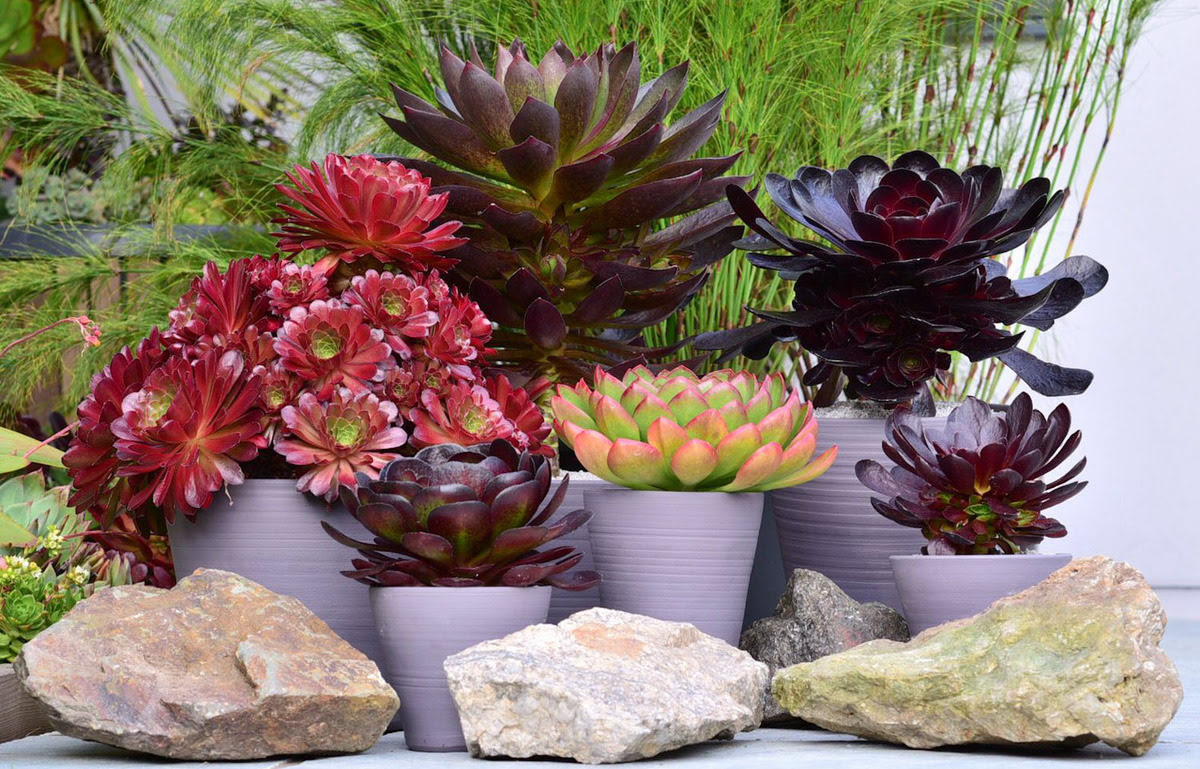Home>Gardening News and Trends>Latest News>How To Ship Succulents


Latest News
How To Ship Succulents
Published: December 27, 2023
Discover the latest news and expert tips on how to ship succulents safely and efficiently. Learn the best practices for packaging and shipping succulent plants.
(Many of the links in this article redirect to a specific reviewed product. Your purchase of these products through affiliate links helps to generate commission for Chicagolandgardening.com, at no extra cost. Learn more)
Table of Contents
Introduction
Shipping succulents can be a challenging yet rewarding process. Whether you are a passionate hobbyist sharing your plant collection with friends or a business owner sending these resilient plants to customers, ensuring they arrive in pristine condition is paramount. Succulents, known for their water-retaining properties and striking appearance, require special care during shipping to prevent damage and maintain their vitality.
In this comprehensive guide, we will explore the essential steps to successfully ship succulents to their destination. From selecting the right packaging and preparing the plants for shipment to choosing the most suitable shipping method and addressing international shipping considerations, we will cover every aspect of this delicate process.
Succulent enthusiasts understand the value of these unique plants, which have gained popularity for their low maintenance and diverse aesthetics. By mastering the art of shipping succulents, you can share the joy of these resilient beauties with others while ensuring they arrive unharmed and ready to thrive in their new environment.
Throughout this guide, we will provide valuable insights and practical tips to help you navigate the intricacies of shipping succulents. Whether you are a seasoned succulent aficionado or new to the world of these captivating plants, this guide will equip you with the knowledge and confidence to expertly package and ship succulents to any destination, near or far. Let's embark on this enlightening journey to discover the art of shipping succulents with care and precision.
Choosing the Right Packaging
When shipping succulents, selecting the appropriate packaging is crucial to safeguard the plants from damage during transit. The ideal packaging should provide ample protection while allowing for proper aeration and moisture control. Here are key considerations for choosing the right packaging:
- Box Selection: Opt for sturdy, corrugated cardboard boxes that are spacious enough to accommodate the succulents and additional protective materials. Ensure that the boxes are clean, free from odors, and in good condition to maintain the integrity of the shipment.
- Cushioning Materials: Use soft, shock-absorbing materials such as bubble wrap, packing peanuts, or crumpled paper to cushion the succulents and prevent them from shifting during transit. This cushioning will help mitigate the risk of impact and ensure the plants remain secure within the package.
- Moisture Control: Incorporate materials like sphagnum moss or unbleached paper towels to absorb excess moisture and prevent soil spillage. Proper moisture control is essential to avoid water damage and maintain the health of the succulents throughout the shipping process.
- Secure Enclosure: Choose packaging that securely encloses the succulents to prevent movement within the box. This stability is vital to minimize the risk of damage to the plants and maintain their pristine condition.
- Labeling and Handling Instructions: Clearly label the package as “Fragile” and include handling instructions to alert the carrier to exercise caution when transporting the delicate succulents. This proactive measure can help mitigate rough handling and minimize the potential for damage.
By carefully selecting the right packaging materials and techniques, you can fortify the succulents against the rigors of shipping, ensuring they reach their destination unscathed and ready to thrive. The next step in the shipping process involves preparing the succulents for their journey, a crucial phase that demands attention to detail and precision.
Preparing Your Succulents for Shipping
Before shipping succulents, it is essential to prepare them meticulously to withstand the challenges of transportation. Proper preparation not only safeguards the plants against potential damage but also ensures they remain healthy and vibrant upon arrival. Here are the key steps to prepare your succulents for shipping:
- Inspecting and Pruning: Thoroughly examine the succulents for any signs of damage, disease, or overgrowth. Trim any damaged or excess foliage to promote compactness and reduce the risk of injury during transit.
- Allow for Drying: To prevent excess moisture during shipping, allow the soil around the succulents to dry out adequately before packaging. This minimizes the risk of soil spillage and helps maintain the plants’ integrity during transit.
- Securing Loose Parts: Use gentle, non-abrasive ties or bands to secure any loose parts of the succulents, such as delicate blooms or protruding stems. This precaution ensures that the plants remain intact and pristine throughout the shipping process.
- Protection from Extreme Temperatures: Shield the succulents from extreme temperatures by avoiding shipping during periods of extreme heat or cold. Additionally, consider using insulated packaging or heat packs/cold packs when necessary to maintain a suitable temperature range during transit.
- Documentation and Care Instructions: Include care instructions and relevant documentation, such as plant identification tags or information on specific care needs, to ensure the recipient can provide the necessary care upon receiving the succulents.
By meticulously preparing your succulents for shipping, you can mitigate potential risks and enhance their resilience during transit. The next crucial step in the shipping process involves selecting the most suitable shipping method to ensure the safe and timely delivery of the plants to their destination.
Selecting the Right Shipping Method
Choosing the appropriate shipping method is paramount to ensure the safe and efficient delivery of succulents to their destination. Factors such as transit time, handling procedures, and environmental conditions play a pivotal role in determining the most suitable shipping method. Here are key considerations when selecting the right shipping method for succulents:
- Expedited Shipping: For time-sensitive shipments, expedited shipping services offer faster transit times, minimizing the duration the succulents spend in transit and reducing the risk of prolonged exposure to fluctuating environmental conditions.
- Temperature-Controlled Shipping: When shipping succulents during extreme weather conditions, opt for temperature-controlled shipping services to safeguard the plants from temperature extremes that could compromise their well-being.
- Carrier Reliability: Research and select reputable carriers with a track record of handling delicate shipments with care. Reliable carriers prioritize the safe transport of fragile items, providing added assurance for the successful delivery of your succulents.
- Delivery Tracking and Insurance: Choose shipping services that offer tracking capabilities and optional insurance coverage. Tracking allows you to monitor the progress of the shipment, while insurance provides financial protection in the unlikely event of damage or loss during transit.
- International Shipping Considerations: When shipping succulents internationally, familiarize yourself with the import regulations, phytosanitary certificate requirements, and any restrictions imposed by the destination country to ensure compliance and smooth customs clearance.
By carefully evaluating these factors, you can identify the most suitable shipping method that aligns with the specific needs of your succulent shipment. The next pivotal step in the shipping process involves expertly packaging the succulents to safeguard them during transit and minimize the risk of damage.
Packaging Your Succulents for Shipment
Properly packaging your succulents is a critical step in ensuring their safe transit to their destination. The packaging process involves meticulous attention to detail and the use of suitable materials to protect the plants from damage. Here are essential guidelines for packaging your succulents for shipment:
- Secure Enclosure: Place the prepared succulents in the center of the shipping box, ensuring they fit snugly without excessive movement. This stability minimizes the risk of damage during transit.
- Cushioning Materials: Surround the succulents with cushioning materials such as crumpled paper or bubble wrap to provide a protective barrier against impact and prevent shifting within the box.
- Moisture Control: Utilize absorbent materials such as sphagnum moss or unbleached paper towels to manage moisture levels and prevent soil spillage during transit. This helps maintain the plants’ health and prevents water damage.
- Secure Lid Closure: Seal the shipping box securely with strong packing tape, ensuring the lid is well-secured to prevent accidental opening during handling and transit.
- Labeling and Handling Instructions: Clearly label the package as “Fragile” and include handling instructions to alert the carrier to exercise caution when transporting the delicate succulents. This proactive measure can help minimize the risk of rough handling.
By adhering to these packaging guidelines, you can fortify your succulents against the rigors of shipping and enhance their chances of arriving at their destination in optimal condition. The next crucial aspect of the shipping process involves addressing the necessary labeling and documentation to ensure a smooth and well-documented transit for the succulents.
Labeling and Documentation
Accurate labeling and comprehensive documentation are essential components of shipping succulents, ensuring that the package is handled with care and complies with relevant regulations. Proper labeling and documentation contribute to a smooth transit process and provide crucial information to carriers and recipients. Here are key considerations for labeling and documentation when shipping succulents:
- Fragile Labeling: Clearly mark the package as “Fragile” to alert handlers and carriers to exercise caution when transporting the delicate succulents. This label serves as a visual cue to prioritize gentle handling throughout the shipping process.
- Live Plant Labeling: If shipping internationally or to regions with specific import regulations, include a “Live Plant” label on the package to indicate the nature of the contents. This helps customs officials and carriers identify the shipment’s contents accurately.
- Documentation of Contents: Include a detailed packing list or manifest inside the package, specifying the types and quantities of succulents enclosed. This documentation assists carriers and recipients in verifying the contents and ensures accurate handling.
- Care Instructions: Provide clear and concise care instructions for the succulents, detailing essential care practices and post-arrival guidelines for the recipient. This information equips the recipient with the knowledge to nurture and maintain the plants upon delivery.
- Phytosanitary Certificate (If Applicable): When shipping internationally, research and obtain the necessary phytosanitary certificate or documentation required by the destination country’s agricultural authorities. Compliance with these regulations is crucial for smooth customs clearance.
By meticulously addressing labeling and documentation requirements, you can enhance the transparency and safety of the shipping process while equipping the recipient with the necessary information to care for the succulents upon arrival. The final section of this guide delves into the considerations and best practices for shipping succulents internationally, navigating the complexities of cross-border plant shipments.
Shipping Succulents Internationally
Shipping succulents internationally involves navigating a set of regulations, certifications, and considerations specific to each destination country. International shipments require meticulous attention to compliance with import regulations and documentation to facilitate smooth customs clearance. Here are essential guidelines for shipping succulents internationally:
- Research Import Regulations: Thoroughly research the import regulations and phytosanitary requirements of the destination country. Different countries have varying restrictions on the types of plants that can be imported, and compliance is crucial to avoid delays or rejections at customs.
- Obtain Phytosanitary Certificates: If required by the destination country, obtain phytosanitary certificates or any other documentation mandated by their agricultural authorities. These certificates verify that the shipped succulents are free from pests and diseases, meeting the importing country’s plant health standards.
- Customs Declarations: Accurately complete customs declarations, providing detailed and transparent information about the contents of the shipment. Clear and precise declarations facilitate efficient customs processing and minimize the risk of delays or complications at the border.
- Shipping Restrictions and Prohibitions: Familiarize yourself with any specific shipping restrictions or prohibitions imposed by the destination country. Some countries may have stringent regulations on certain plant species, and adherence to these restrictions is vital to avoid confiscation or rejection of the shipment.
- Carrier Selection: Choose a reputable carrier with experience in international plant shipments and a thorough understanding of the necessary documentation and handling procedures. A reliable carrier can provide guidance and support to ensure compliance with international shipping requirements.
By diligently adhering to these guidelines and regulations, you can navigate the complexities of international plant shipments and facilitate the smooth and compliant transit of succulents to destinations across the globe. With a comprehensive understanding of international shipping considerations, you can expand the reach of your succulent shipments while ensuring adherence to global import regulations.
Conclusion
Shipping succulents demands careful planning, attention to detail, and adherence to best practices to ensure the safe and successful transit of these resilient plants. By meticulously selecting the right packaging, preparing the succulents for shipment, and choosing the most suitable shipping method, you can fortify the plants against the rigors of transportation and enhance their chances of arriving in optimal condition.
Expertly packaging the succulents, addressing labeling and documentation requirements, and navigating international shipping considerations are pivotal steps in the shipping process. These measures not only safeguard the plants during transit but also provide crucial information to carriers and recipients, promoting transparency and informed care upon delivery.
Whether you are sharing your passion for succulents with friends or customers locally or venturing into international shipments, the knowledge and insights shared in this guide empower you to navigate the complexities of shipping succulents with confidence. By prioritizing the well-being of the plants and embracing best practices for packaging and transit, you can enrich the lives of others with the beauty and resilience of succulents, fostering a thriving and interconnected community of plant enthusiasts.
As you embark on your succulent shipping endeavors, remember that each carefully packaged plant represents a shared joy, a symbol of resilience, and a connection that transcends borders. With dedication and a commitment to excellence in succulent shipping practices, you can spread the allure of these captivating plants far and wide, nurturing a world adorned with the vibrant and enduring beauty of succulents.










